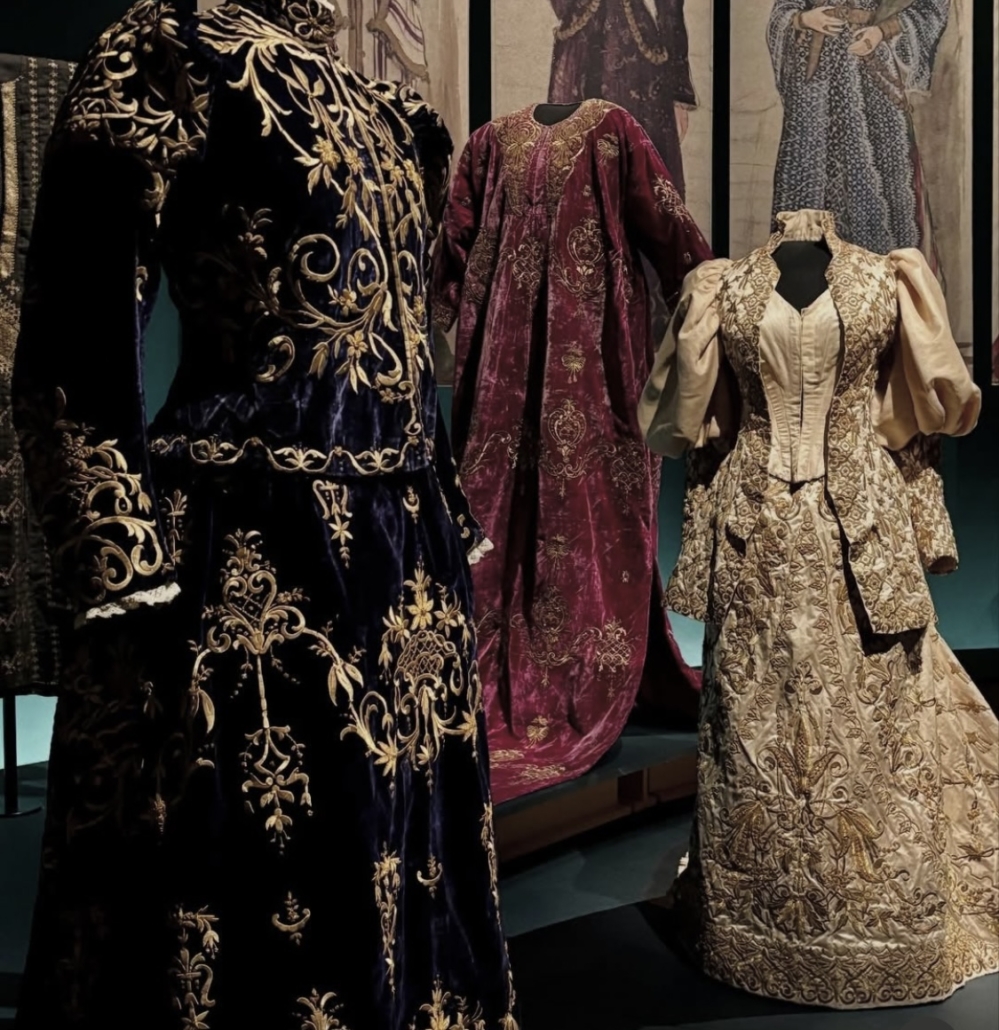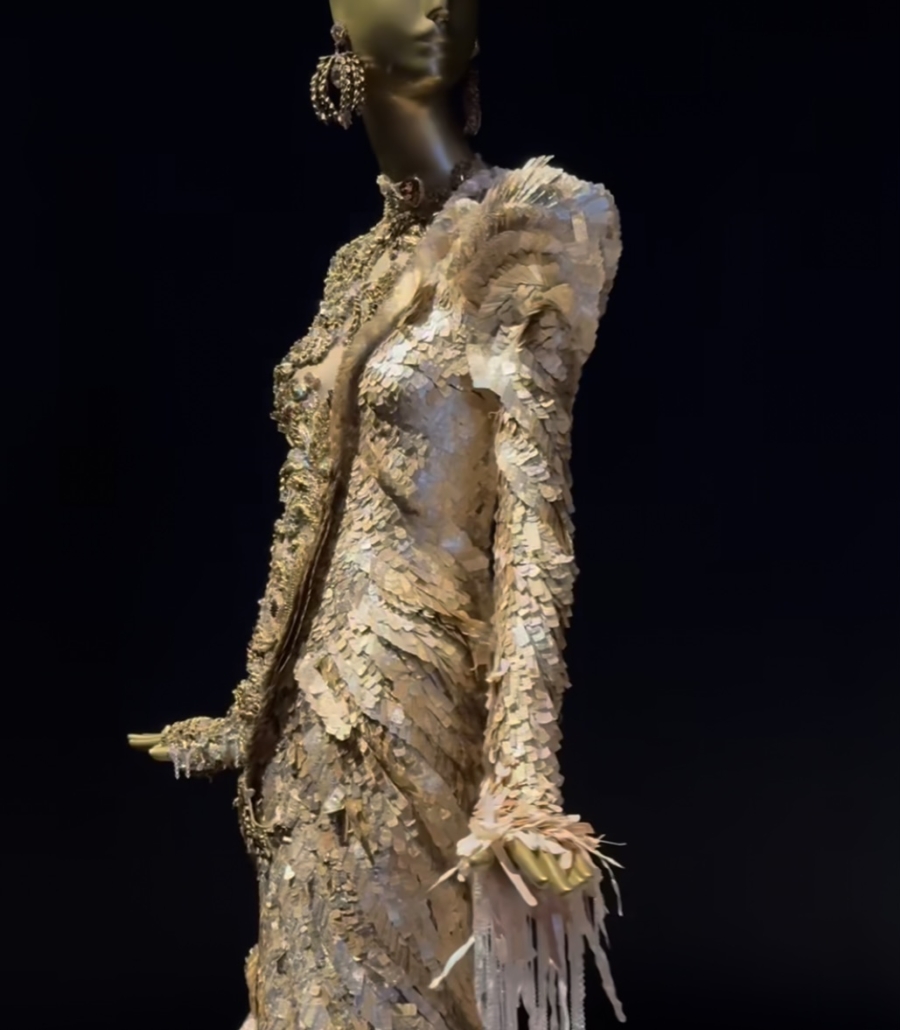Along the Gold Thread

c
From the Maghreb to Japan, a fabulous journey through time and space, to discover the mysterious and fascinating origin of gold and its marriage with textile arts.


The most precious and noble metal in the world, an object of desire, a symbol of wealth and splendor, a sign of elegance and refinement… Discovered nearly 7,000 years ago, gold has never ceased to fascinate men. The material par excellence of all know-how, experiments and traditions, it has been used since Antiquity for the creation of jewelry, adornments and weapons. From the fifth millennium BC, it embellished the first luxury fabrics dedicated to men of power. Over the following centuries, skilled weavers and artisans—Roman, Byzantine, Chinese, Persian and then Muslim—deployed the most ingenious techniques to create true artistic fabrics where silk or linen fibers intertwine with gold blades and threads.


From the first ornaments sewn onto the clothing of the deceased to the flamboyant dresses of contemporary Chinese artist Guo Pei that punctuate the entire exhibition, from the gold-woven silks of the Indian and Indonesian worlds to the shimmering kimonos of the Edo era, the exhibition unfolds the thousand-year-old history of gold in textile arts. In a dialogue combining scientific discovery and artistic perspective, it reveals the dazzling beauty, diversity, technicality, and richness of costumes from a vast region stretching from the Maghreb to Japan, via the Middle East, India, and China.














